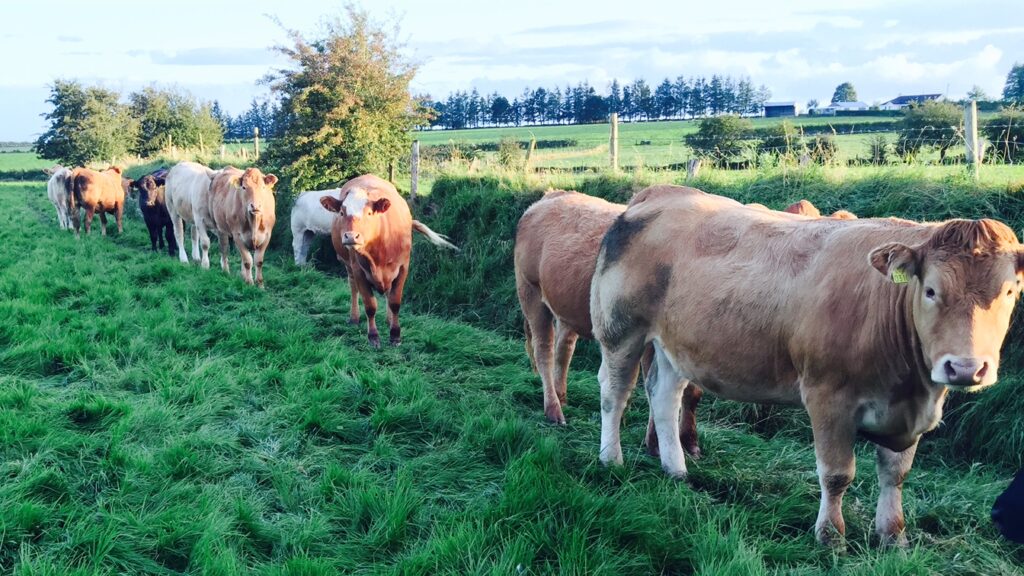Calving heifers at 24 months has raised some concerns among farmers in the past. There are many factors which deter farmers away from breeding heifers at 15 months old.
However, it must be noted that farmers who calve heifers at 24 months operate more profitable systems.
Continental replacement heifers should weigh 420-440kg at mating (60% of mature body weight at 15 months), while traditional breeds (Hereford and Angus) should be hitting the 370kg mark.
However, given the circumstances this year, this will be a difficult task. A poor performance over the first winter will hamper any chance of the animal meeting weight targets at breeding.
On many farms, heifers selected for breeding are still housed. These animals may weigh 330-340kg at present – well short of the target of 380-400kg at turnout.
Speaking to AgriLand, Teagasc’s Vivian Silke outlined that the first thing farmers need to do is weigh these animals.
“There is no point guessing the weights,” he said.
“A decision needs to be made of which animals are going to be carried through for breeding. Maybe out of 10 heifers, farmers will discover that only three or four are up near the desired weight; some of them may be a long way back from it.
“At this stage, pushing on those heifers that have a realistic shot of making the weight is the only option. The biggest thing with 15-month-old heifers is that they would be physically heavy enough,” he explained.
Options
Vivian outlined that farmers have two options. Firstly, they can give heifers an extra month to gain that weight and calve them from mid-March and April.
Secondly, where farmers are tied into an early-calving system, they need to pick out the animals that will reach the target weight and push them on with meal in order to get them there.
“You have to be realistic in terms of which ones will make it,” he noted.
If farmers have heifers hovering around 360-370kg, he said, they need to question will they reach the 420kg mark (group average weight) in a month’s time.
“Are you willing to give them another month to allow them to get up to that weight? Farmers have to respond to the year,” he added.
Bull selection
Selecting an easy-calving bull is crucial when it comes to breeding heifers. Vivian said: “It goes without saying that you need to be very selective on the bulls or sires that are used.
“I wouldn’t be overly breed specific; but what I would be using is a highly-proven bull that is below 5% for calving. My rule of thumb is that bulls/sires should be <5% for calving difficulty and >90% for reliability.”
Minerals
Teagasc’s Joe Hand, a drystock advisor in the Tipperary region, added that minerals are essential during the breeding season.
It is vital to ensure that heifers get an adequate supply of minerals. Mineral licks, boluses or minerals in the water supply can all be used.
“Replacement heifers need to be gaining weight throughout the summer months. In addition, there is an opportunity – at the shoulder of the year – to put weight onto these animals.
“I’ve noticed in the last fortnight that cattle in sheds have been losing weight; this is mainly because farmers are trying to stretch fodder supplies,” he concluded.


